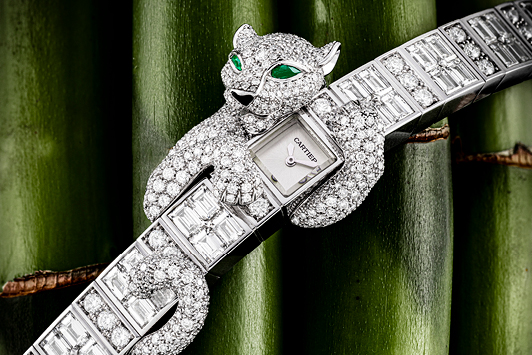
While retailers across America shuttered their doors or opened only to serve a dwindling trickle of customers during the Covid-19 crisis, sales at auction houses boomed in 2020. Thanks to Zoom previews, online video condition reports, and easy online bidding, auctions became virtual one-stop shopping destinations for lovers of luxury watches.
Phillips in Association with Bacs & Russo — the full name of the auction house’s watch department — led the market with total sales of $133 million last year. Not only was this a record for Phillips, it was the highest annual sale total across any watch auction department in history. Phillips had 15 timepieces fetch more than $1 million each, including the top three that sold at auction in 2020: two Patek Philippes and a Rolex, signaling the continued dominance of these two brands.
Sotheby’s and Christie’s also saw respectable numbers. Including live auctions, Sotheby’s watch sales for 2020 totaled $97.5 million, while Christie’s came to $79.8 million and set 11 records for specific reference numbers. Sotheby’s sold the fourth- and fifth-highest-priced watches last year, and Christie’s had five of its timepieces go for over $1 million.
Power to the web
The strongest emerging trend in 2020 was the growth of online bidding. Phillips — which held live auctions in Hong Kong and Geneva, but not in New York — recorded 50% more online participants last year than in 2019, and 95% of the watches it sold received bids via the web.
“We saw a 254% increase in downloads of the Phillips app, a 136% increase in new online accounts, and a 62% increase in the number of new visitors to Phillips.com,” says Paul Boutros, head of watches for the Americas at Phillips. “The growth is coming from new, online-savvy clients, as well as existing clients who are becoming more comfortable with online bidding during our live auctions.”
Sotheby’s saw a similar increase in digital bids. The auction house says 92% of watch lots that sold last year went to online buyers — 60% more than in 2019.
“The digitalization of our business has been a key priority for a few years, so we were able to quickly adapt to the new market parameters,” says Sotheby’s worldwide head of watches Sam Hines. “We held over 140 online watch sales last year, which totaled close to $50 million — almost eight times the number of sales and five times the value for 2019.”
Christie’s watch specialist Mike Fossner notes that “auctions are historically known for being social events, and that was forced to change. Alongside this has come a trend of higher-end pieces being offered on online platforms.” Indeed, last year saw a 211% jump in the total value of the auction house’s online watch offerings, Fossner relates, and “the Christie’s watch department broke the record for online watch sales three times.”
Welcoming newcomers
Accompanying the surge in web-based activity was “an influx of first-time buyers, including a robust millennial audience,” according to Phillips’s Boutros.
Sotheby’s found that 50% of its watch buyers last year were new to the category, and that 40% were under age 40. “We have also seen a growing appetite for ‘Buy Now’ — a new capability on our website and app with fixed-price offerings, as opposed to the auction format,” says Hines. “Since we soft-launched this in September, we’ve seen an average sold-price point of $16,000, and 56% of those buyers were brand new to Sotheby’s.”
At Christie’s, Fossner says watches attracted more new registrants for online sales than any other department last year, up 20% from 2019.
Independent stars
Another notable trend was the rise of independent brands. Phillips dedicated an entire sale to watches made in the past 20 years. Younger brands such as Philippe Dufour, F.P. Journe and Laurent Ferrier led the event, which totaled more than $15 million.
“The brand that has really stuck out is F.P. Journe,” says Fossner, noting similarly strong sales of independents at Christie’s.
Bonhams has also seen these brands excel. “One example was an F.P. Journe Octa Réserve de Marche in rose gold that sold for GBP 97,750 [about $134,200], four times its estimate,” says Jonathan Darracott, Bonhams’s global head of watches. That said, the auction house’s two top watch lots this year were no surprise: Both were Paul Newman-style Rolex Daytonas, which sold for about $326,200 and $309,300. This model remains the hottest one on the market.
On the buying end, the division came in second only to the books department in the number of first-time purchasers.
“It’s more of a rocket ship than a trend.”
Article from the Rapaport Magazine - March 2021. To subscribe click here.